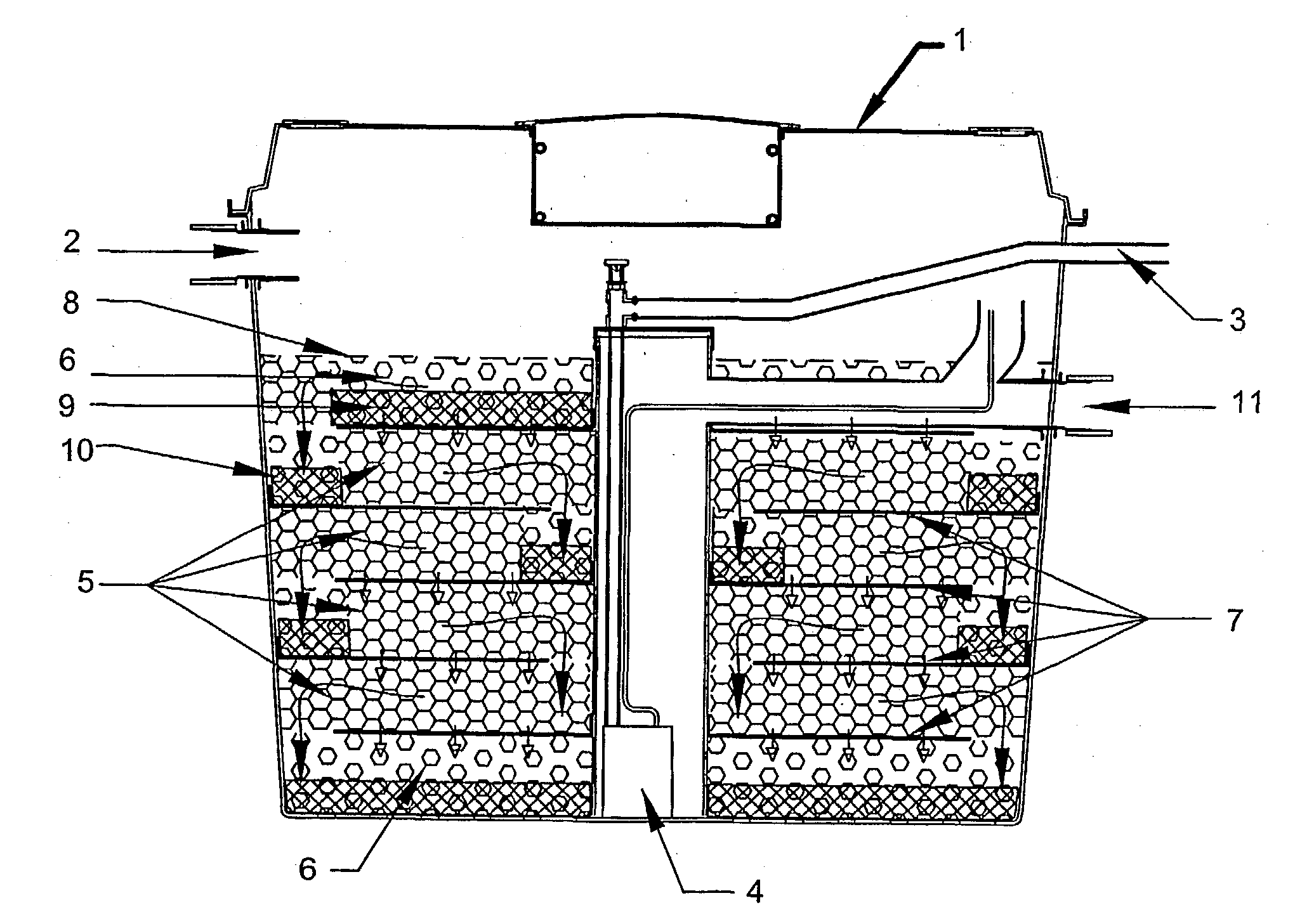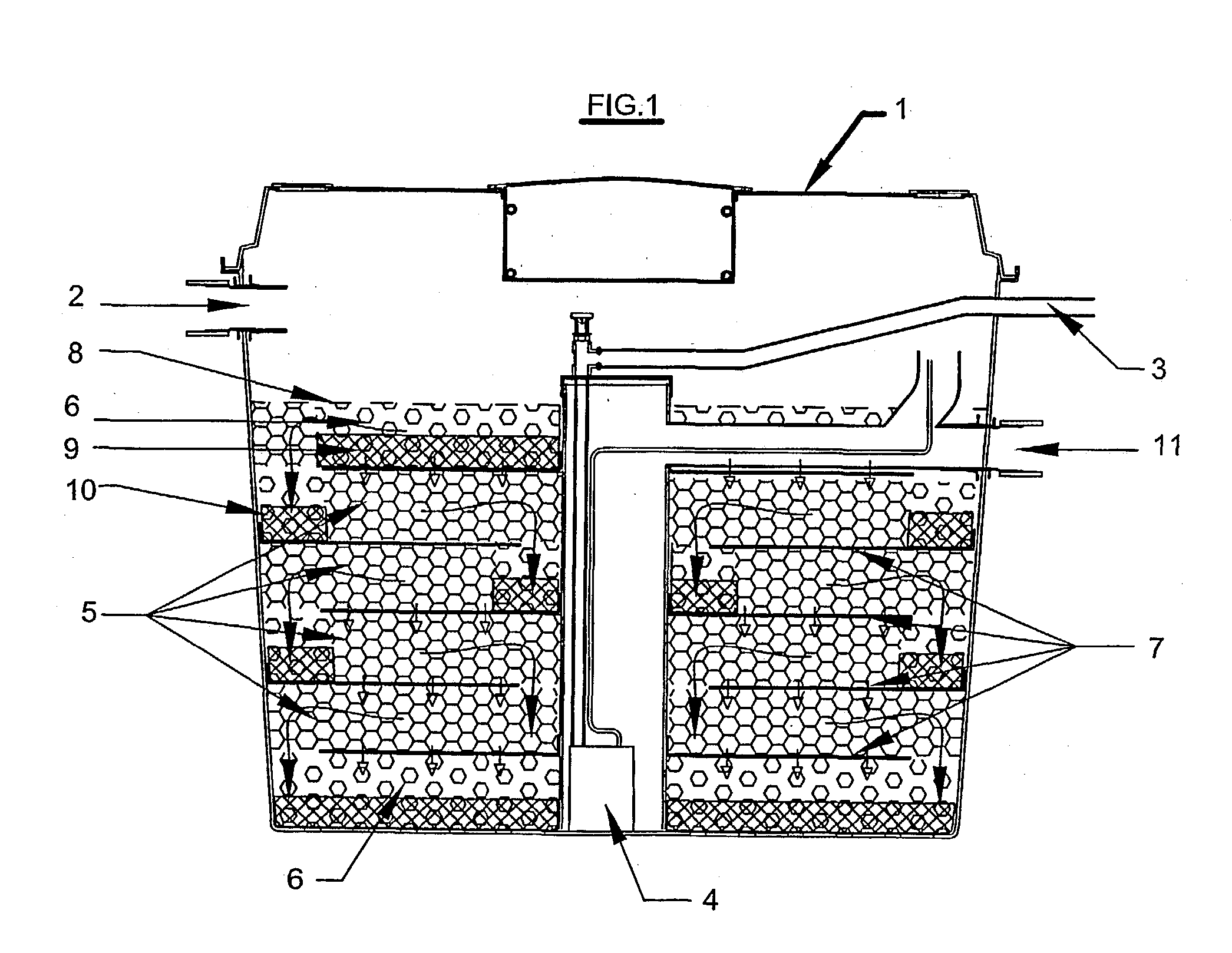Biolytic filtration
a biolytic and filtration technology, applied in the field of biolytic filtration, can solve the problems of short effluent retention time, inability to increase the depth of the bed, and the treatment of wastewater by the humus matrix, so as to promote good exchange of effluent, prevent the erosion of the humus matrix, and the effect of inherent stabilisation of the surfa
- Summary
- Abstract
- Description
- Claims
- Application Information
AI Technical Summary
Benefits of technology
Problems solved by technology
Method used
Image
Examples
Embodiment Construction
[0043] Referring to the drawing, the humus matrix support lattice structured bed biolytic filter comprises a conventional septic tank 1 with effluent inlet 2 and filtrate outlet 3. A submersible pump 4 is located in a sump in the base zone of the tank and an overflow duct is located in an upper region 11.
[0044] The tank contains support lattice bed elements of two types. Humus matrix elements 5, to provide long retention and filtration of effluent, and drainage matrix elements 6 to provide drainage, upper bed support and aeration. These elements 5, 6, are formed by cutting flexible corrugated plastic drainage pipe and bagging it in open mesh bags either with a humus like substitute such as peat (humus matrix elements) or without (drainage matrix elements).
[0045] Drainage bed elements 6 are formed into a layer in the base of the tank, with several humus matrix layers 5 above it, each placed over a geotextile flow barrier 7 designed to reduce channel flow, trap suspended solids, and i...
PUM
| Property | Measurement | Unit |
|---|---|---|
| pore size | aaaaa | aaaaa |
| surface area | aaaaa | aaaaa |
| volume | aaaaa | aaaaa |
Abstract
Description
Claims
Application Information
 Login to View More
Login to View More - R&D
- Intellectual Property
- Life Sciences
- Materials
- Tech Scout
- Unparalleled Data Quality
- Higher Quality Content
- 60% Fewer Hallucinations
Browse by: Latest US Patents, China's latest patents, Technical Efficacy Thesaurus, Application Domain, Technology Topic, Popular Technical Reports.
© 2025 PatSnap. All rights reserved.Legal|Privacy policy|Modern Slavery Act Transparency Statement|Sitemap|About US| Contact US: help@patsnap.com


